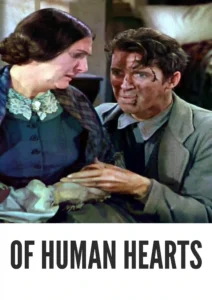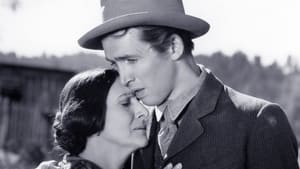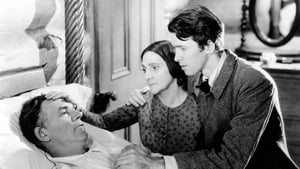Contact: [email protected]
Video Sources 0 Views
- Watch trailer
- Of Human Hearts


Of Human Hearts 1938 First Early Colored Films Version
Synopsis
Table of Contents
ToggleReview: In Of Human Hearts (1938) – A Heartfelt Journey Through Family and Faith

Introduction
“In Of Human Hearts” (1938) is a poignant exploration of the human spirit and the enduring bonds of family and faith. In this review, we’ll delve into the significance of this classic film, its thematic depth, and its lasting impact on audiences.
Check The Full Colorized Movies List
Check Our Colorized Movies Trailer Channel
Understanding Of Human Hearts 1938: Director, Cast, and Genre
Directed by the talented Clarence Brown, “In Of Human Hearts” (1938) showcases his adeptness at crafting deeply emotional narratives that resonate with viewers. The film features a stellar cast, including James Stewart and Beulah Bondi, whose heartfelt performances bring the story to life. Blending elements of drama and romance, “In Of Human Hearts” (1938) transports audiences to a bygone era where the struggles of everyday life are met with courage and resilience.
Exploring the World of Of Human Hearts 1938: Plot and Characters
Set against the backdrop of the American Civil War, “In Of Human Hearts” (1938) follows the journey of a young man named Jason Wilkins, portrayed by James Stewart, as he navigates the trials and tribulations of adolescence and adulthood. Raised by a stern and devoutly religious mother, played by Beulah Bondi, Jason must confront his own beliefs and values in the face of personal tragedy and societal upheaval. Along the way, he encounters a cast of memorable characters who shape his destiny and challenge his understanding of the world.
The Art of Film Colorization
Film colorization serves as a transformative tool that enhances the visual experience of classic movies, breathing new life into timeless stories and captivating audiences with vibrant hues. By digitally adding color to black and white films, colorization allows viewers to immerse themselves in the rich tapestry of cinematic worlds, exploring every nuance and detail with fresh eyes and renewed appreciation.
Early Colored Films: A Brief History
The history of colored films traces its roots back to the early days of cinema, with filmmakers experimenting with various techniques to add color to their creations. From hand-tinted frames to early Technicolor processes, the evolution of colored film has been marked by innovation and ingenuity, paving the way for the development of modern colorization techniques that continue to captivate audiences to this day.
Of Human Hearts 1938 and Its Early Colored Version
The decision to release “In Of Human Hearts” (1938) in a colorized format was met with both anticipation and skepticism. While some welcomed the opportunity to experience the film in vibrant color, others expressed concerns about the potential impact on its visual aesthetic. Nevertheless, the early colored version of “In Of Human Hearts” (1938) offers viewers a fresh perspective on the timeless tale of family and faith, enhancing its emotional resonance and captivating audiences with its luminous beauty.
The Debate Over Film Colorization
The debate over film colorization continues to divide audiences and critics alike, with proponents praising its ability to breathe new life into classic movies and introduce them to a new generation of viewers, while detractors argue that it compromises the artistic integrity of the original work and diminishes its historical significance. As the debate rages on, filmmakers and audiences alike are left to ponder the merits and drawbacks of colorization in the ever-evolving landscape of cinema.
Examining Of Human Hearts 1938 as an Early Colored Film
As with any colorized classic, the impact of colorization on “In Of Human Hearts” (1938) is a matter of personal interpretation. Some may argue that it enhances the film’s visual appeal and immerses viewers in its world, while others may feel that it detracts from the stark beauty of the original black and white version. Regardless of one’s stance on the issue, there’s no denying the enduring power of “In Of Human Hearts” (1938) as a timeless masterpiece that continues to resonate with audiences around the world.
Influence and Legacy: Of Human Hearts 1938’s Impact on Cinema
“In Of Human Hearts” (1938) has left an indelible mark on the world of cinema, inspiring countless filmmakers and captivating audiences with its timeless tale of family and faith. From its unforgettable performances to its sweeping cinematography, the film continues to resonate with viewers of all ages, reaffirming its status as a beloved classic of the drama genre.
Director’s Cinematic Legacy: Beyond Of Human Hearts 1938
Clarence Brown’s influence extends far beyond “In Of Human Hearts” (1938), with a diverse body of work that continues to captivate audiences around the globe. From “National Velvet” to “Anna Karenina,” Brown’s films are celebrated for their emotional depth, visual elegance, and timeless themes, solidifying his legacy as one of the preeminent directors of Hollywood’s Golden Age. Through his groundbreaking work, Brown has left an indelible imprint on the world of cinema, inspiring generations of filmmakers to follow in his footsteps.
Themes Explored in Of Human Hearts 1938
“In Of Human Hearts” (1938) explores a myriad of themes, from the bonds of family and faith to the complexities of human nature and the pursuit of redemption. Through its richly drawn characters and poignant storytelling, the film invites viewers to ponder life’s deepest questions and reflect on the values that define us as individuals and as a society. As audiences immerse themselves in the world of “In Of Human Hearts” (1938), they are reminded of the enduring power of love, forgiveness, and the human spirit to triumph over adversity.
Reception and Controversy Surrounding Of Human Hearts 1938
Upon its release, “In Of Human Hearts” (1938) received widespread critical acclaim, with many praising its heartfelt performances, tender romance, and timeless themes. However, the decision to release the film in a colorized format sparked debate among purists, reigniting the age-old discussion surrounding film preservation and artistic integrity. Despite the controversy, “In Of Human Hearts” (1938) remains a beloved classic that continues to resonate with audiences of all ages, reaffirming its status as a timeless masterpiece of the drama genre.
Where to Watch Of Human Hearts 1938 Online
For those eager to experience the timeless magic of “In Of Human Hearts” (1938), the film is readily available on popular streaming platforms such as Netflix, Amazon Prime, and Hulu. Whether you choose to watch it in its original black and white format or the early colored version, “In Of Human Hearts” (1938) promises to transport you to a world of love, faith, and redemption, where the human spirit shines brightest in the darkest of times.
FAQs About Of Human Hearts 1938
Q: Is “In Of Human Hearts” (1938) based on a true story? A: No, “In Of Human Hearts” (1938) is a fictional tale crafted by screenwriter Bradbury Foote, who drew inspiration from his own experiences and observations of human nature.
Q: Who are the main actors in “In Of Human Hearts” (1938)? A: “In Of Human Hearts” (1938) features a talented cast led by James Stewart and Beulah Bondi, whose heartfelt performances bring the characters to life with depth and authenticity.
Q: What awards did “In Of Human Hearts” (1938) win? A: While “In Of Human Hearts” (1938) did not win any major awards, it received critical acclaim for its poignant storytelling, memorable performances, and timeless themes.
Q: Why was “In Of Human Hearts” (1938) released in a colorized format? A: The decision to release “In Of Human Hearts” (1938) in color was made to introduce the film to a new generation of viewers and enhance its visual appeal for modern audiences. While the choice to colorize the film sparked debate among purists, it ultimately allowed “In Of Human Hearts” (1938) to reach a wider audience and ensure its continued relevance in the annals of cinematic history.
Conclusion
As we reflect on the enduring legacy of “In Of Human Hearts” (1938), let us celebrate its status as a timeless classic that continues to captivate audiences with its heartfelt storytelling, memorable performances, and timeless themes. Whether viewed in its original black and white format or the early colored version, “In Of Human Hearts” (1938) remains a shining example of the power of cinema to inspire, entertain, and provoke thought. Through its poignant exploration of family, faith, and redemption, the film reminds us of the enduring strength of the human spirit and the power of love to transcend even the greatest of trials. So, whether you’re a longtime fan or discovering it for the first time, take a moment to experience the magic of “In Of Human Hearts” (1938) and discover why it continues to resonate with audiences around the world.












